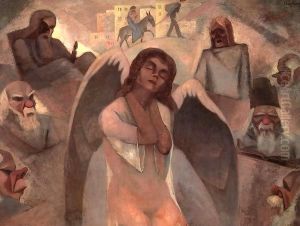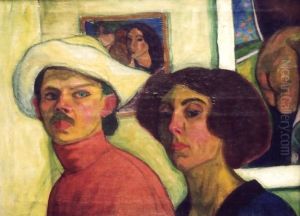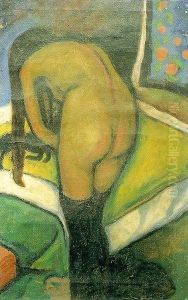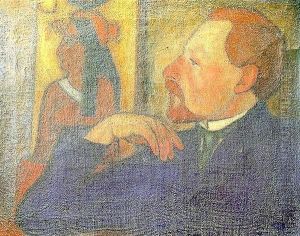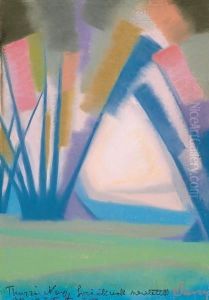Arkhip Kuinji Paintings
Arkhip Ivanovich Kuinji was a distinguished Russian landscape painter associated with the Peredvizhniki movement, an influential group of Russian realist artists who protested against the academic restrictions of the time. Born into the family of a Greek shoemaker in the town of Mariupol, then part of the Russian Empire and now located in Ukraine, Kuinji's early life was marked by hardship and loss. Orphaned at a young age, he was apprenticed to a local icon painter before moving to St. Petersburg to study art. Despite the financial difficulties and lack of formal education, Kuinji's talent was undeniable, and he eventually attended the St. Petersburg Academy of Arts, albeit not as a full-time student due to his financial situation.
Kuinji's work is renowned for its dramatic use of light and color, with landscapes that convey a profound sense of mood and atmosphere. His paintings, such as 'Moonlit Night on the Dnieper', 'After a Rain', and 'Birch Grove', demonstrate his unique ability to illuminate scenes in a nearly mystical light, setting him apart from his contemporaries. Kuinji's approach to landscape painting was innovative and ahead of its time, combining realism with elements of romanticism and later, symbolism. This distinct style earned him great acclaim, though it also led to periods of conflict with both the academic establishment and the Peredvizhniki group.
Despite his professional successes, Kuinji was known to be reclusive, and for significant periods of his career, he withdrew from the public eye, not exhibiting his work and living in relative isolation. This did not, however, diminish his influence on Russian art, particularly among younger artists who admired his commitment to artistic freedom and his ability to capture the transcendent beauty of nature. In the later years of his life, Kuinji took on a role as an educator, becoming a professor at the St. Petersburg Academy of Arts, where he mentored future generations of Russian painters.
Arkhip Kuinji's contribution to Russian art was profound, with his works continuing to be celebrated for their innovative approach to landscape painting and their unparalleled depiction of light. His death in 1910 marked the loss of one of the most original and inspiring landscape painters of his time, but his legacy lives on through his breathtaking landscapes that capture the ethereal beauty of the natural world.
